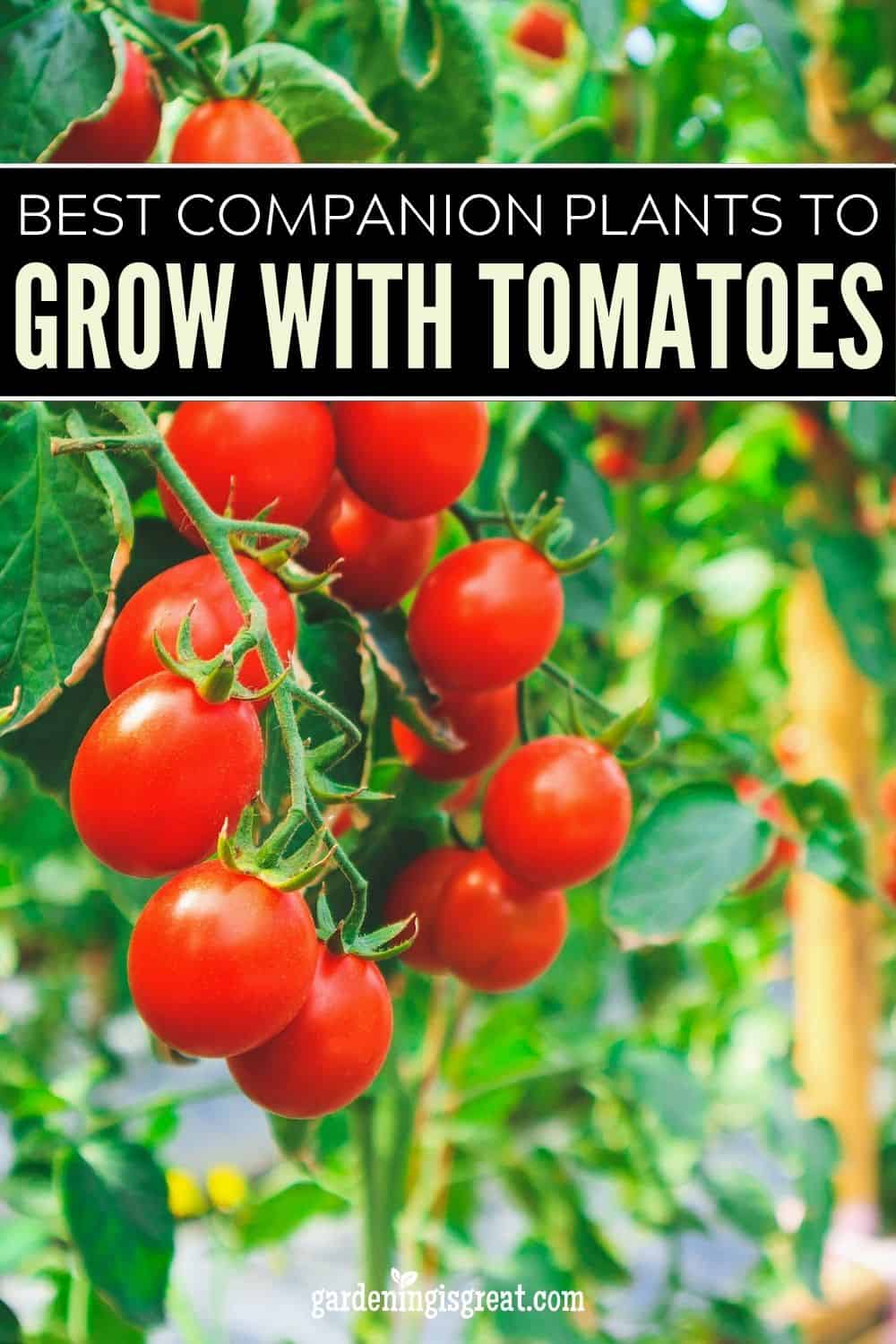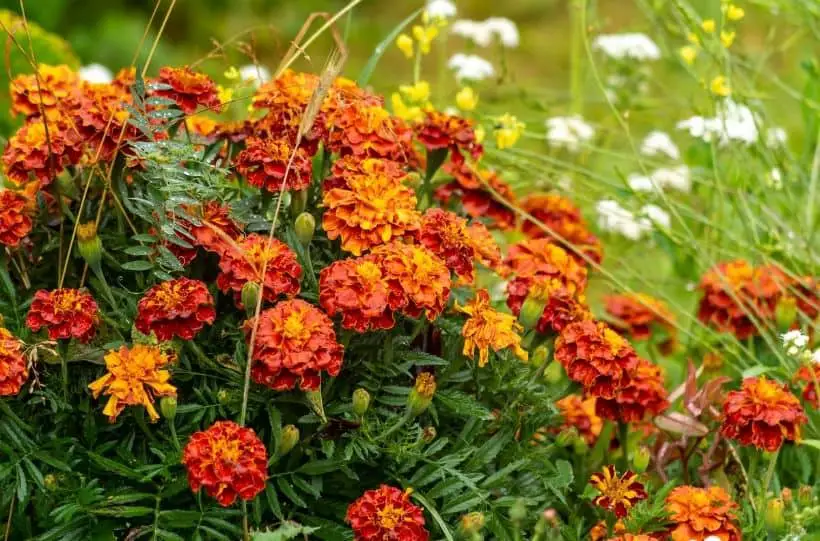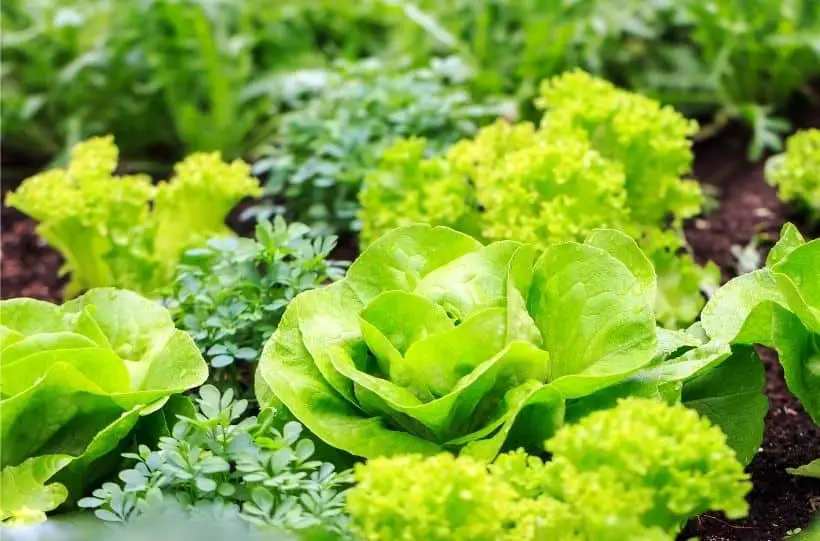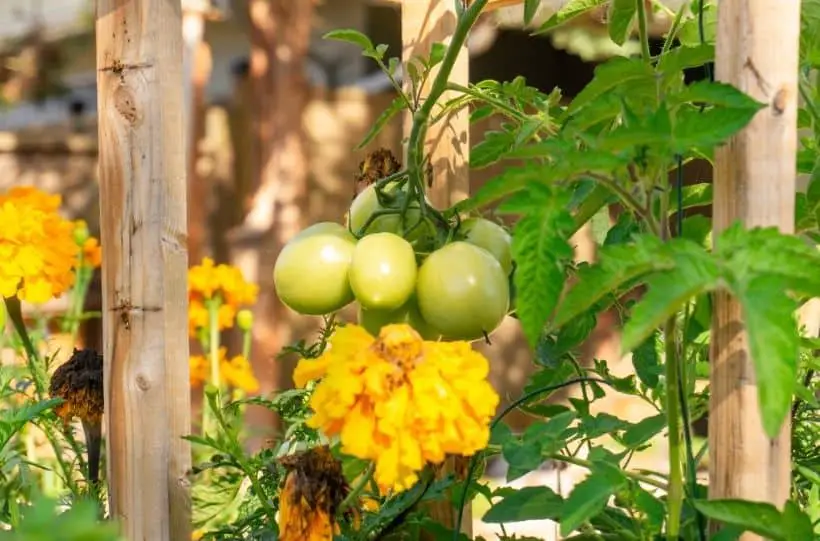Best Companion Plants for Tomatoes in Your Vegetable Garden
If you’re looking for a way to grow more tomatoes, then look no further. Companion plants can help boost your tomato production without any extra work.
To make the most of your garden beds, you want to take advantage of companion planting.
This allows your plants to help each other grow strong and healthy while helping to create a break between plants that can limit the spread of pests and diseases across an entire crop, unlike rows that can transmit the issues down the line.

Tomatoes tend to take up a larger space for each plant, but with the right companion planting options, you can fit more plants into the same space allowing for a better overall yield.
Best Companion Plants for Tomatoes
These companion plants offer various benefits to increase your overall yield. Some examples include:
- attracting pollinators such as bees and butterflies;
- providing natural fertilizers;
- deterring pests like slugs, snails, and aphids;
- attracting beneficial insects that attack harmful ones such as leaf miners or whiteflies.
Green beans
Green beans make a great companion plant for your tomatoes. Growing pole beans on trellises along the north side of your garden beds is a great way to make the most of your garden space.
The nitrogen-fixing bacteria at the root of this plant will help feed your tomatoes for an amazing crop, while the heat of the sun reflecting off the leaves of your green beans will help provide your tomatoes with the heat they love so much.
These two plants work really well together and can help you get a larger crop, even from a small bed.
Peas
Peas like green beans are naturally nitrogen-fixing and come in varieties that can climb trellises and provide the heat retention that green beans can.
You can easily plant green beans and peas in a rotation behind your tomato garden bed to make the most of your space.
Sweet Pea
Sweet Pea, unlike its name implies, is not actually a vegetable but a flower that is really beneficial to your tomato garden. If you would like another vining plant to add to your area to help attract more pollinators and increase your garden’s yield, plant sweet pea with your tomatoes.
This plant doesn’t take a lot of nutrition from your tomatoes but will attract bees and butterflies while helping to trap heat for your tomato plants and can easily grow along with green beans and peas.
Marigold
Marigold makes for a great addition to your tomato beds. Not only can it help to repel unwanted insects like aphids and damaging wildlife like deer and rabbits, but this flower can also actually help your tomatoes grow better.

And, leaving the roots of your marigolds in the soil at the end of the season can help fight off a nematode problem.
Basil
Basil and tomatoes naturally complement each other, pulling the flavor out of the other in many Italian dishes. In the garden, these plants work to improve the flavor of each other as well.
Basil will help to repel unwanted insects from your tomato garden and help to bring out the deep flavors of your tomatoes for the best crop you have ever grown.
Oregano
Oregano is another fabulous Italian herb that grows well with tomatoes. This herb loves the heat and humidity of the tomato bed and can make a great protective repellent for insects you do not want in your garden to help protect your tomato plants.
Parsley
Parsley is a great herb for growing in with your tomatoes and will help them grow by improving the general health of your tomato plants and repelling unwanted insects.
This leafy herb is also a great addition to your tomato bed because, like other popular Italian herbs, parsley can help improve the overall flavor of your tomatoes.
Garlic
Garlic has a strong scent that is great for helping to repel insects from your tomato garden bed, and the flavors of garlic, tomatoes, and Italian herbs all blend and complement each other well.
Garlic needs to be planted in the fall long before your tomatoes go in. If you choose to companion plant your garlic, use the garlic to line the edges of the garden bed where they can go untouched during planting and can help create a barrier between your tender young tomatoes and unpleasant pests.
Borage
Borage is a great flowering herb that tends to grow a bit wild. This herb will attract a large number of bees to your garden that will help keep your tomatoes well pollinated.
Borage is great for repelling the dreading hornworm and protecting your tomato plants from the devastation this green pest can cause.
Lettuce
Lettuce can greatly benefit from being planted in the shade of a large and flourishing tomato plant. Planting lettuce under your tomatoes is a great way to make the most of your space and take advantage of the way nature can work together.

Other tomato companion plants can help protect your lettuce while the tomatoes provide shade, and in turn, the lettuce will help act as a living mulch to trap moisture the tomatoes greatly need and snuff out any attempts of unwanted weeds growing later in the season.
Carrots
Carrots can grow well with tomatoes but are best grown towards the outer edges of the beds, where the roots of the tomatoes will not prevent the carrots from growing to their full potential.

Carrots are a taproot, and growing them near tomatoes can help to pull nutrients that are deep within the soil up towards the top of the soil where your tomatoes’ noticeably shallow roots can benefit.
Nasturtiums
Nasturtiums can make a great addition to your garden bed and grow amazingly well alongside your tomatoes. This plant can grow rather large and naturally acts as a trap for aphids and other unwanted insects to help protect your vegetables.
At the same time, it looks amazing in your garden and can act as a ground cover or living mulch around your garden beds. Nasturtiums are edible and make a great addition to your summer salads.
Bad Companions
Avoid companion planting tomatoes with plants that have a stronger fragrance and flavor that can affect your tomatoes or plants that tend to be heavy feeders and could likely take the nutrients your tomato plants need to thrive.
Some plants to avoid companion planting with your tomatoes include dill, fennel, and cabbage.

With these twelve good companions, you should now be armed with ideas of what to plant with your tomatoes this season.
And check out these articles for more information about growing tomatoes in your home garden:

